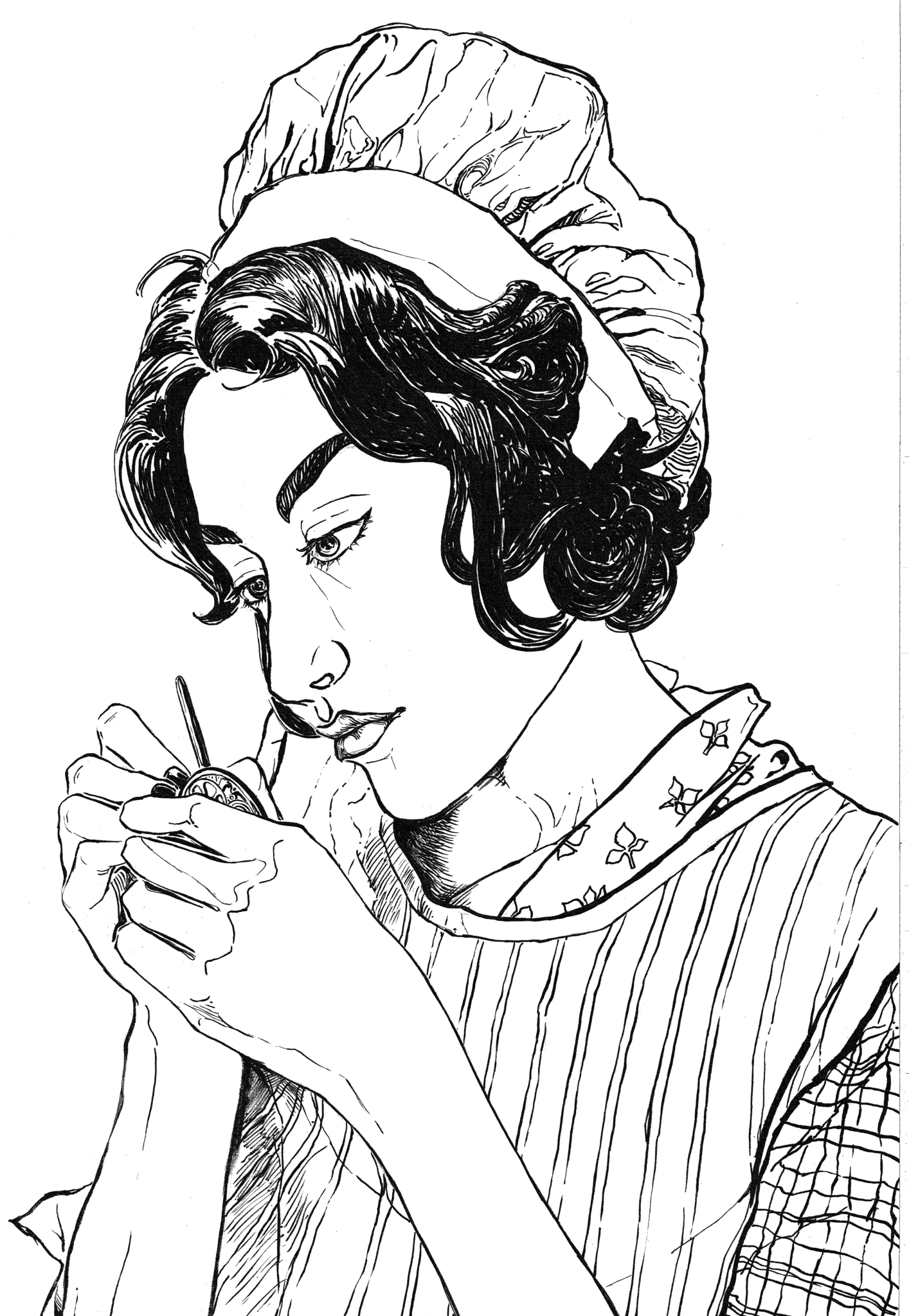
Michelle Li
We’ve spent a lot of time talking about women in the workplace over the past year and a half. Since the #MeToo movement began, our society has grappled with the ways women have been abused in these spaces: how their bodies have been exploited, their expendability has been assumed and their silences have been bought. These conversations feel very much of this moment in history, but the Yale Dramatic Association first-year show “Radium Girls” reminds audiences that systems of corporate power have never been safe for women.
Written by D.W. Gregory, “Radium Girls” offers a fictionalized account of group of female employees at the U.S. Radium Corporation who fall ill after working on the production of luminescent watches beginning during the United States’ involvement in World War I. Tasked with coating the dials with radium-infused paint, the girls are unaware of the life-threatening dangers of this radioactive substance.
The story focuses on the real-life Radium Girl Grace Fryer. Played with an equal measure of power and sensitivity by Emily Li ’22, Grace has left the factory to plan a future with her fianceé Tom, Liam Muldoon ’22, when she begins to have dental problems similar to those plaguing her former co-workers. When these toothaches turn out to be the result of lethal radium poisoning, the Radium Girls decide to sue the U.S. Radium Corporation for both recognition and survival as many of them struggle to pay their mounting medical bills. Although it’s stirring to watch Grace and those around her fight back, the show is careful not allow the inspiration to outweigh the heartbreak of the situation. Courtroom drama is interlaced with more raw, intimate moments, ensuring that the audience cannot forget that this empowerment is built on a bedrock of tragedy.
Although the narrative grounds itself in Grace’s story, the secondary characters often outshined the quiet protagonist. The factory manager Arthur Roeder, Julian Hornos Kohl ’22, struggles with his culpability in the girl’s radium poisoning and desperately searches for a way to believe he is still good even as his employees begin to die. Kohl maneuvers his character’s contradictions skillfully, allowing for Arthur to have sympathy but never catharsis. Grace’s headstrong friend Kathryn, Kyra Gee ’22, casts off the pressure to appeal to public sympathy during the media frenzy surrounding the case. Instead, she chooses to approach the lawsuit with a raw fury she knows she’s earned.
When the anger of Kathryn and others is in full force, the theater is overtaken by the sound of the incessant ticking of a clock. Sound and lighting designer Will Wegner ’22 leans into this motif borrowed from the clock factory itself. The set — designed by Robert Lopez ’22 — is remarkably sparse, allowing for a giant projection of an analog clock to dominant the stage throughout the show, a constant reminder of the unstoppable forward motion of the plot. When the factory workers are instructed to clean the tips of their radium-laced brushes with their mouths, the audience knows that the clock is ticking for these girls; it’s heartbreaking to watch the young women realize this themselves.
“Radium Girls” is clear to point out that this was not an unavoidable tragedy. While radium was hailed as a miraclus technological advance and even a cure for a variety of medical ailments, the science supporting these claims was dangerously intertwined with the businesses that publicized them. Studies were funded by the corporations, and scientific truth was corroded by overeager marketers and a sensationalist press. While ingesting radium seems absurd to modern audiences, it’s impossible not to recognize that the systems that allowed this gross misjudgment are still alive today. The story of the U.S. Radium Corporation exists squarely alongside the inconvenient realities of major nutrition studies backed by multinational food production firms, the highly-publicized downfall of the fraudulent medical technology company Theranos, and the United States’ status as one of only two countries in the world that allows direct-to-consumer pharmaceutical advertising.
In its handling of scientific deception, gender-based silencing of workers and the cannibalization of trauma in the media, “Radium Girls” is a piece of historical fiction that refuses to stay rooted in the past. While it lays bare these still-present societal faults, the show also offers a timeless story of resilience in the face of injustice. “I am more angry than I am scared,” says Grace as she prepares to take her case to trial. Maybe more than anything it is this feeling, this hope driven by fury, that makes the story of the Radium Girls still feel so alive.
Elizabeth Hopkinson | elizabeth.hopkinson@yale.edu .







